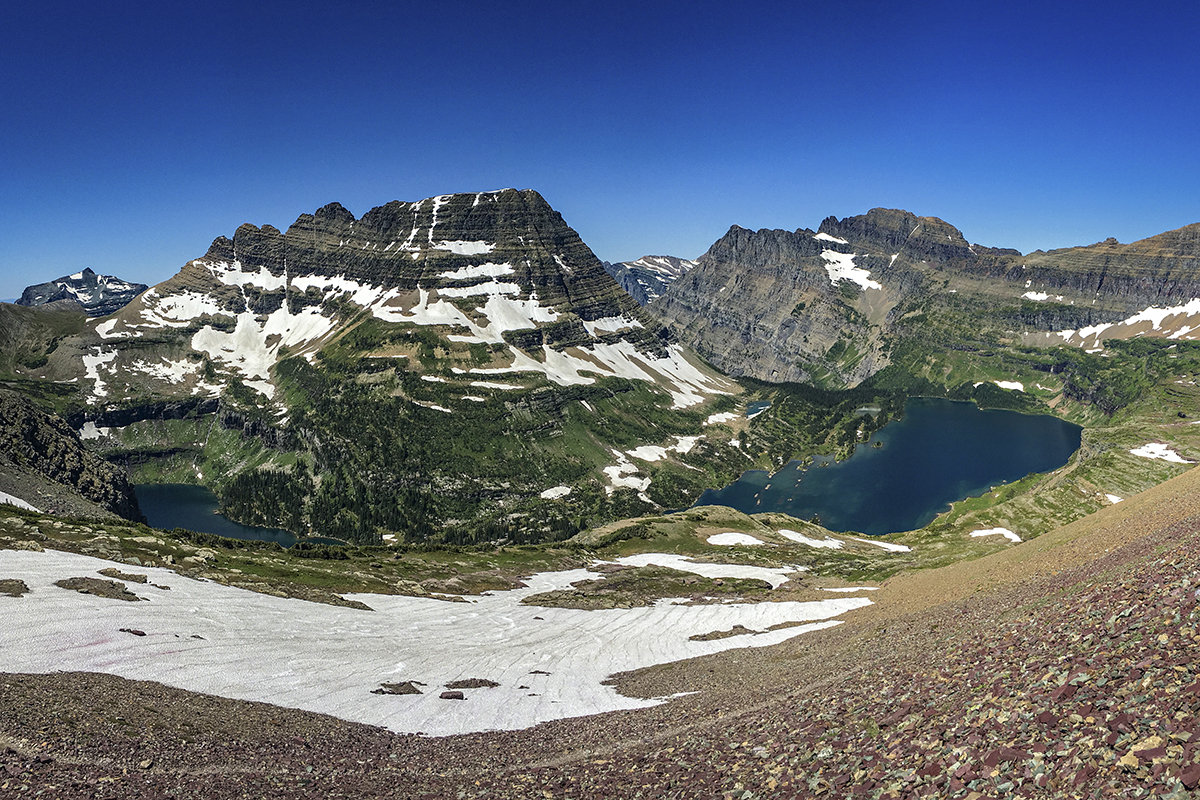
Giving Back to Glacier
Donations to nonprofit are used to fulfill park’s project wish list as tight budgeting continues
Whether it’s rebuilding the signature spiral staircase at the historic Many Glacier Hotel, tracking the park’s diverse suite of wildlife species, retooling trails, educating future park stewards, examining visitor use trends, helping provide training for Bark Ranger Gracie, or reducing vehicle emissions, the Glacier National Park Conservancy is on hand to work for you, the visitor, as well as the natural resources that keep the park’s interior wild.
But the nonprofit organization also can’t do it without you, the visitor.
Glacier National Park has seen a 40% growth in visitation since 2012, with more than 3 million visitors converging here annually.
As the park’s nonprofit fundraising arm, the Glacier National Park Conservancy is at the ready to assist with projects the National Park Service can’t manage, but that serves the visitor experience. For example, due in part to visitors’ generous donations to the nonprofit, social scientists from the University of Montana’s College of Forestry have been helping park managers understand visitor-use patterns and trends in Glacier National Park over the past decade.
The data was recently compiled into a story map to help show where, when and how many people are hiking on the trails throughout the park. This allows managers to know if there are any shifts in hiker patterns on trails, and to make science-based decisions to protect for a range of opportunities: from very popular areas with many people and amenities to areas where visitors can experience more solitude. Managing for this range of opportunities also ensures quality visitor experience and protection of resources.
The Conservancy also gives visitors the opportunity to help give back, furnishing them with a sense of stewardship and pride in being a stakeholder in the National Park Service’s crown jewel.
Another way visitors can help participate in conserving and preserving Glacier National Park’s resources, or those of any other unit in the National Park System, is by helping to clear the air. Literally.
The “Be Idle Free, Turn the Key” program was born of a partnership between
Glacier National Park and the Glacier National Park Conservancy through their “Idling Awareness Campaign,” with the goal of educating visitors and employees about how they can reduce vehicle emissions in order to decrease pollutants that contribute to health problems and climate change.
Idling pollution has been linked to respiratory problems such as asthma, for example, which increases vulnerability to COVID-19.
Transportation emissions play a significant role in fueling climate change, the effects of which are seen in the reduction of the park’s namesake glaciers. Vehicle idling occurs in Glacier in parking lots, at scenic viewpoints and trailheads, and while stopped in traffic and road construction.
Glacier has received around 3 million annual visitors in recent years, most traveling by car. Limiting idling times to no more than two minutes will save money on gas and benefit the health of both the public and the park resources.
Glacier National Park is committed to reducing vehicle idling among employees and the public. Strategies for employees include enactment of a management directive limiting idling time for park vehicles, training visitor-facing staff on idling reduction messaging, and all-employee communications about idling. For park visitors, the campaign will focus on education and outreach.
The Glacier National Park Conservancy funded the design and printing of stickers depicting cartoon mountain goats traveling in a red vehicle with the slogan, “Be idle free — Turn the key.” The stickers will be free to visitors and will be available from rangers outside the Apgar and Logan Pass visitor centers and in the Rising Sun area. The logo will also be used in park messaging to remind employees and visitors to shut off their vehicles while waiting.
“This is such an easy way for each of us to do something small that can cumulatively have a big, positive impact,” Doug Mitchell, executive director of the Glacier National Park Conservancy, said. “There’s just no downside to this innovative program. Not only will turning our cars off save fuel and make parking lots and pullouts quieter and more enjoyable for all of us, but one simple twist of the wrist by each of us will improve the air quality for all of us, human and animal alike.”
To donate to the Glacier National Park Conservancy or check out its annual Field Guide to fund Glacier’s pressing needs, visit www.glacier.org.